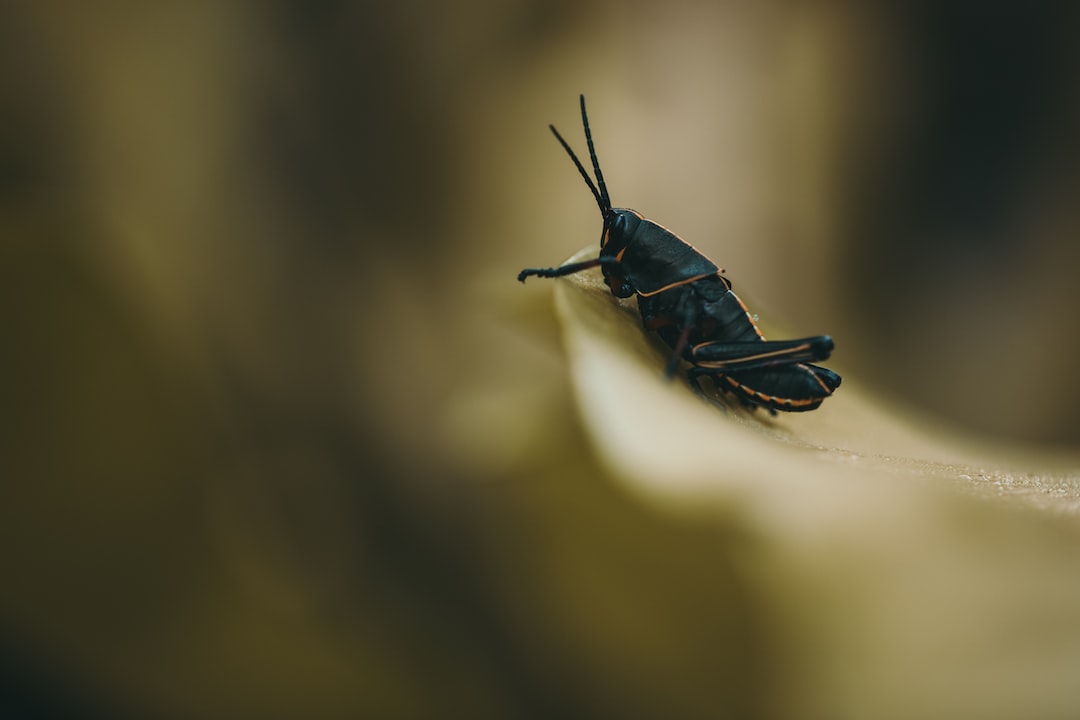Say Goodbye to Oleander Caterpillars: Effective Ways to Get Rid of Them

The oleander caterpillar is a common pest that can wreak havoc on gardens and plants. These caterpillars are known for their vibrant colors and voracious appetites, making them a formidable foe for gardeners. In this article, we will explore the characteristics of the oleander caterpillar, the dangers they pose to both humans and plants, and various methods for controlling and preventing infestations.
Key Takeaways
- Oleander caterpillars are identified by their bright colors and distinctive black spines.
- These caterpillars can be harmful to both humans and plants, causing skin irritation and damage to oleander plants.
- Natural remedies for controlling oleander caterpillars include handpicking, introducing natural predators, and using insecticidal soap.
- Chemical options for eradication include pesticides, but these can also harm beneficial insects and pollinators.
- Prevention is key to avoiding infestations, including regular plant maintenance and keeping the garden clean.
Understanding the Oleander Caterpillar: Identification and Characteristics
The oleander caterpillar is easily recognizable due to its striking appearance. It has a bright orange body with black bands and spines along its back. These spines are not only for show – they are actually venomous and can cause skin irritation and allergic reactions in humans. The caterpillars are typically found on oleander plants, which are their preferred food source. They feed on the leaves of the plant, often leaving behind skeletonized foliage.
Gardeners can identify oleander caterpillars by their distinctive appearance and behavior. They are usually found in groups, congregating on the undersides of leaves. When disturbed, they will curl up into a defensive posture, displaying their bright colors as a warning to potential predators. It is important to exercise caution when handling these caterpillars, as their venomous spines can cause painful stings.
The Dangers of Oleander Caterpillars: Health Risks and Plant Damage
Contact with oleander caterpillars can pose health risks to humans. The venomous spines on their bodies can cause skin irritation, redness, and swelling. In some cases, individuals may experience allergic reactions, such as itching or hives. It is important to avoid direct contact with these caterpillars and to wear protective clothing when working near infested plants.
In addition to the health risks they pose, oleander caterpillars can also cause significant damage to plants. They feed on the leaves of oleander plants, often stripping them bare. This can weaken the plant and make it more susceptible to disease and other pests. If left unchecked, an infestation of oleander caterpillars can decimate an entire garden or landscape.
Natural Remedies for Oleander Caterpillar Control: Non-Toxic Solutions
| Remedy | Effectiveness | Application |
|---|---|---|
| Diatomaceous Earth | High | Apply directly to plants and caterpillars |
| Bacillus thuringiensis | High | Spray on plants and caterpillars |
| Neem Oil | Medium | Spray on plants and caterpillars |
| Garlic Spray | Low | Spray on plants |
For gardeners who prefer to use organic methods, there are several natural remedies for controlling oleander caterpillars. One option is to manually remove the caterpillars from the plants. This can be done by handpicking them off the leaves and disposing of them in a sealed bag or container. Another natural remedy is to introduce natural predators, such as ladybugs or lacewings, which will feed on the caterpillars.
Another effective natural remedy is to spray the plants with a mixture of water and dish soap. This solution will suffocate the caterpillars and prevent them from feeding on the leaves. Neem oil is another organic option that can be used to control oleander caterpillars. It is derived from the neem tree and acts as a natural insecticide, disrupting the caterpillars’ feeding and reproductive cycles.
Chemical Options for Oleander Caterpillar Eradication: Pros and Cons
While natural remedies can be effective, some gardeners may opt for chemical solutions to control oleander caterpillars. There are several chemical options available, including insecticides that specifically target caterpillars. These products can be applied directly to the plants and will kill the caterpillars upon contact.
One of the main advantages of using chemical solutions is their effectiveness. They can quickly eliminate an infestation and prevent further damage to plants. However, there are also drawbacks to consider. Chemical insecticides can be harmful to beneficial insects, such as bees and butterflies, as well as other wildlife. They can also leave behind residue on plants, which may be a concern for those who prefer organic gardening practices.
Prevention is Key: How to Keep Oleander Caterpillars Away from Your Garden

Preventing oleander caterpillar infestations is often easier than trying to control them once they have taken hold. There are several steps gardeners can take to keep these pests away from their gardens. One of the most effective methods is to regularly inspect plants for signs of infestation. Look for clusters of caterpillars on the undersides of leaves and remove them immediately.
Another preventative measure is to encourage biodiversity in the garden. Planting a variety of different species can help attract natural predators, such as birds and beneficial insects, which will feed on the caterpillars. Additionally, keeping the garden clean and free of debris can help reduce hiding places for caterpillars and other pests.
Timing is Everything: When to Treat Oleander Caterpillar Infestations
Timing is crucial when it comes to treating oleander caterpillar infestations. The best time to treat these pests is when they are in their early stages of development, as they are more vulnerable at this stage. Look for clusters of eggs on the undersides of leaves and remove them before they hatch. If you notice small caterpillars feeding on the leaves, take action immediately to prevent further damage.
It is also important to consider environmental factors when treating infestations. Avoid treating plants during periods of high heat or drought, as this can stress the plants and make them more susceptible to damage. Instead, choose a cool, overcast day to apply treatments, when the plants are less likely to be stressed.
DIY Oleander Caterpillar Traps: Homemade Solutions for Pest Control
For those who prefer a hands-on approach, creating homemade traps can be an effective method for controlling oleander caterpillars. One simple trap can be made using a plastic container filled with a mixture of water and dish soap. The caterpillars will be attracted to the soapy water and will drown when they fall into the trap.
To create a homemade trap, start by cutting a small hole in the lid of a plastic container. Fill the container with a mixture of water and dish soap, leaving enough space for the caterpillars to fall into the trap. Place the trap near infested plants, making sure to secure the lid to prevent other wildlife from accessing the trap.
Professional Pest Control Services: When to Call in the Experts
In some cases, it may be necessary to call in professional pest control services to deal with an oleander caterpillar infestation. Professional exterminators have access to specialized equipment and treatments that may be more effective than DIY methods. They can also provide expert advice on preventing future infestations and maintaining a healthy garden.
It is important to consider the severity of the infestation and the potential risks before deciding to hire a professional. If the infestation is widespread and causing significant damage, or if you have concerns about using chemical treatments yourself, it may be best to seek professional help.
The Importance of Proper Disposal: How to Safely Dispose of Oleander Caterpillars
Proper disposal of oleander caterpillars is crucial for preventing future infestations. It is important to avoid simply throwing them in the trash, as they can still pose a risk to humans and other wildlife. Instead, seal them in a plastic bag or container and dispose of them in an outdoor trash bin.
Another option for disposal is to place the caterpillars in a bucket of soapy water. This will drown them and prevent them from causing further damage. Once they are dead, they can be safely disposed of in an outdoor trash bin.
Maintaining a Healthy Garden: Tips for Long-Term Oleander Caterpillar Prevention
Preventing oleander caterpillar infestations in the long term requires ongoing maintenance and care of the garden. Regularly inspect plants for signs of infestation and take action immediately if caterpillars are found. Remove any eggs or caterpillars by hand and dispose of them properly.
In addition to regular inspections, it is important to maintain a healthy garden environment. This includes proper watering, fertilizing, and pruning of plants. Healthy plants are more resistant to pests and diseases, making them less likely to attract oleander caterpillars.
Controlling and preventing oleander caterpillar infestations requires a combination of proactive measures and effective treatments. By understanding the characteristics of these pests and implementing preventative strategies, gardeners can protect their plants and maintain a healthy garden. Whether using natural remedies or seeking professional help, it is important to take action at the first sign of an infestation to prevent further damage. With proper care and attention, gardeners can keep oleander caterpillars at bay and enjoy a thriving garden.



